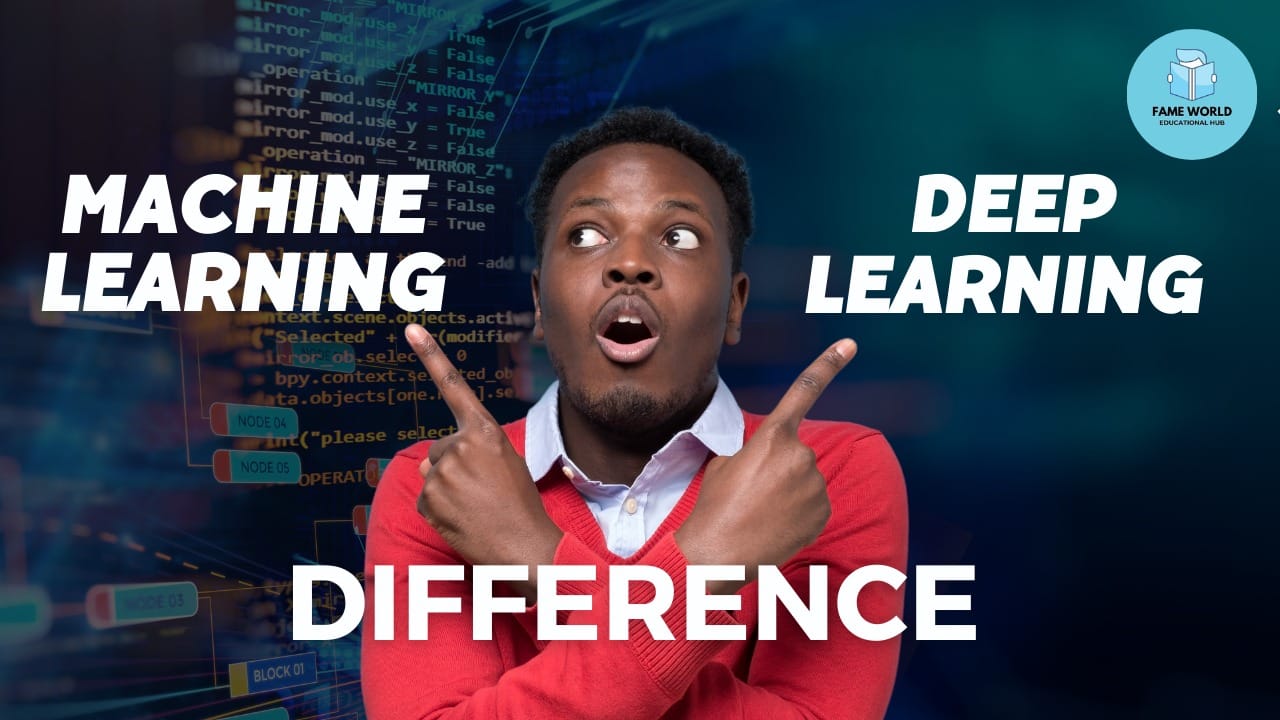Machine Learning (ML) and Deep Learning (DL) are transformative technologies shaping industries ranging from healthcare to finance. While they are often used interchangeably, they are distinct fields within the broader domain of Artificial Intelligence (AI). Let’s explore the differences between ML and DL, their applications, and when to use each.
What is Machine Learning?
Machine Learning is a subset of AI that involves training algorithms to make predictions or decisions without being explicitly programmed. ML focuses on developing models that improve their performance with experience over time.
Key Features of Machine Learning:
- Algorithms Used:
- Linear Regression
- Logistic Regression
- Decision Trees
- Support Vector Machines (SVMs)
- Random Forests
- Training Data:
- Requires structured data for learning.
- Example: A labeled dataset with features and corresponding outputs.
- Human Intervention:
- Manual feature selection is common.
- Data preprocessing and transformation often require domain expertise.
Applications of Machine Learning:
- Fraud detection in banking.
- Email spam filters.
- Predictive maintenance in manufacturing.
What is Deep Learning?
Deep Learning is a specialized subset of ML that uses artificial neural networks (ANNs) to mimic the functioning of the human brain. It excels in processing unstructured data such as images, audio, and text.
Key Features of Deep Learning:
- Algorithms Used:
- Convolutional Neural Networks (CNNs)
- Recurrent Neural Networks (RNNs)
- Transformers
- Generative Adversarial Networks (GANs)
- Training Data:
- Requires large amounts of labeled or unlabeled data.
- Example: Millions of images for object recognition tasks.
- Human Intervention:
- Minimal feature engineering as the model learns features automatically.
- Higher reliance on computational power.
Applications of Deep Learning:
- Autonomous vehicles.
- Facial recognition systems.
- Real-time language translation.
Key Differences Between Machine Learning and Deep Learning
| Feature | Machine Learning | Deep Learning |
| Complexity | Less complex, simpler algorithms. | Highly complex with multi-layered networks. |
| Data Requirement | Works well with smaller datasets. | Requires large datasets for effective training. |
| Processing Power | Can run on standard hardware. | Needs GPUs or TPUs for efficient computation. |
| Feature Engineering | Requires manual feature extraction and selection. | Automates feature extraction. |
| Performance | Performs well for structured data problems. | Excels in unstructured data analysis. |
Choosing Between Machine Learning and Deep Learning
The choice between ML and DL depends on the following factors:
- Dataset Size: Use ML for smaller datasets and DL for larger datasets.
- Computational Resources: DL requires higher computational power compared to ML.
- Nature of the Problem: ML is suitable for simpler tasks, while DL shines in complex, unstructured data scenarios like image and speech recognition.
Future Prospects
Both ML and DL continue to evolve. While ML provides versatility and efficiency for structured data, DL opens doors to groundbreaking innovations such as generative AI and reinforcement learning for real-world applications.
Watch This Video for More Insights
For a deeper dive into the differences between Machine Learning and Deep Learning, check out this informative video:
🔗 Watch Now
Conclusion
Understanding the nuances between ML and DL is crucial for choosing the right approach for your projects. Whether you’re building a predictive analytics tool or working on cutting-edge AI applications, knowing when to leverage ML or DL can make a significant difference.
If you found this blog helpful, don’t forget to share it with your peers and explore the recommended video for additional context!
Additional learning resources:
PYTHON Q&A SERIES – Link
IOT TUTORIAL SERIES – Link
PYTHON PROGRAMMING TUTORIAL SERIES – Link
CAREER TIPS – Link
CLOUD COMPUTING – Link
MERN FULL STACK WEB DEVELOPMENT – Link
DJANGO SERIES – Link
DIGITAL MARKETING – Link
C LANGUAGE – Link
CODING INTERVIEW PREPRATION – Link
NEW AI TOOLS – Link
PYTHONISTA FOR PYTHON LOVERS – Link
ARTIFICIAL INTELLIGENCE – Link
MACHINE LEARNING USING PYTHON – Link
DBMS – Link
PYTHON PROGRAMMING QUIZ SERIES – Link
BLOCKCHAIN TECHNOLOGY TUTORIAL SERIES – Link
NETWORKING QUIZ SERIES – Link
CYBER SECURITY Q&A SERIES – Link
PROGRAMMING RELATED STUFF – Link



